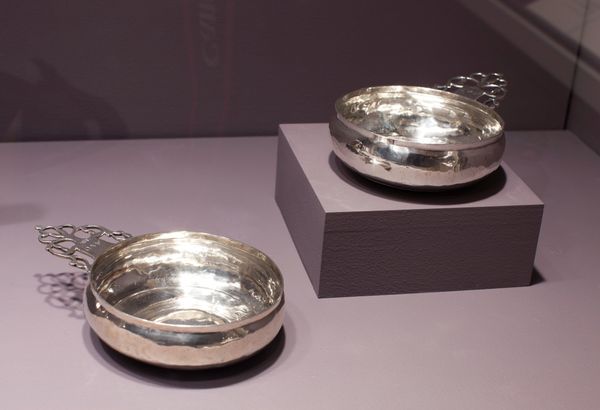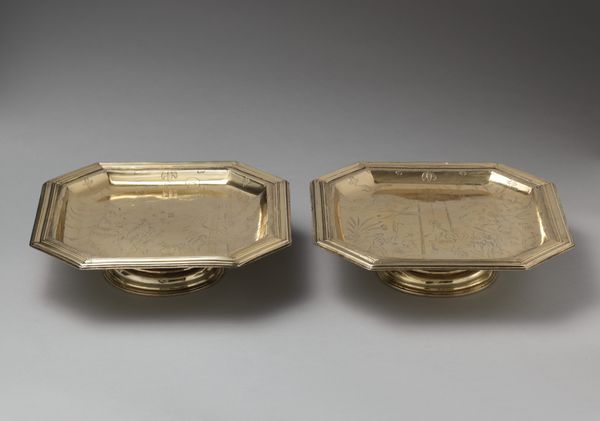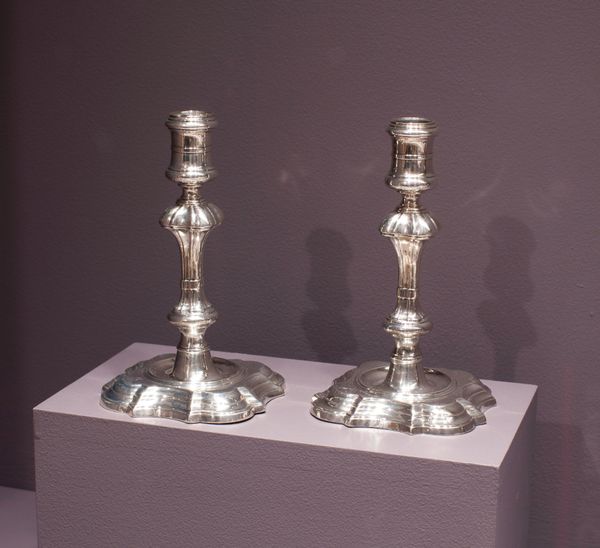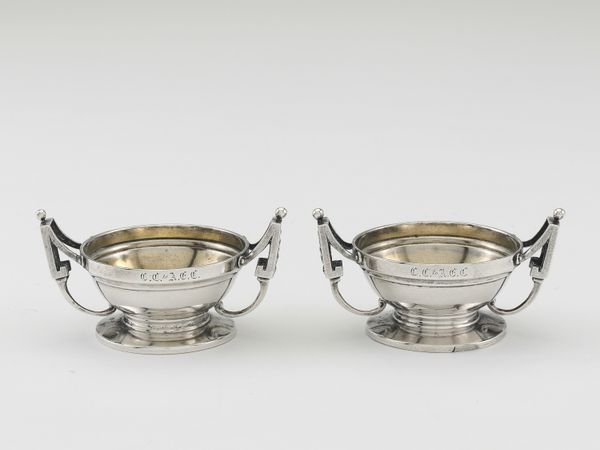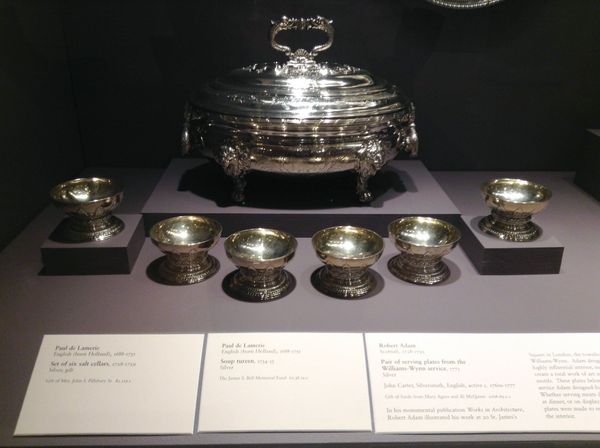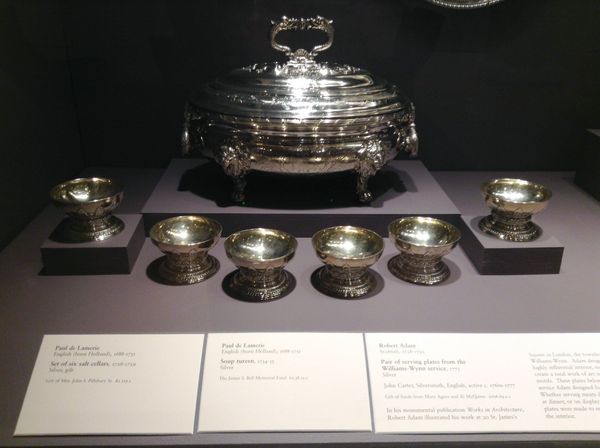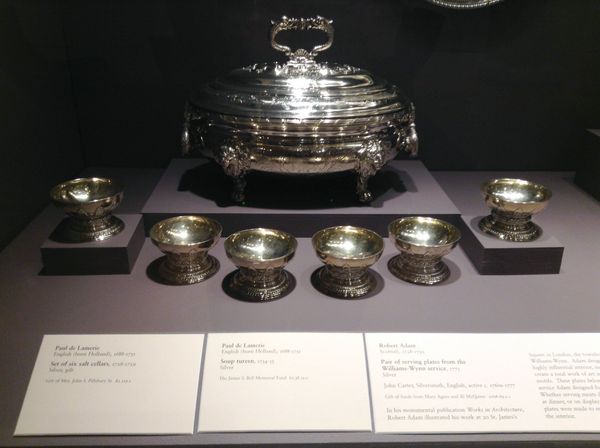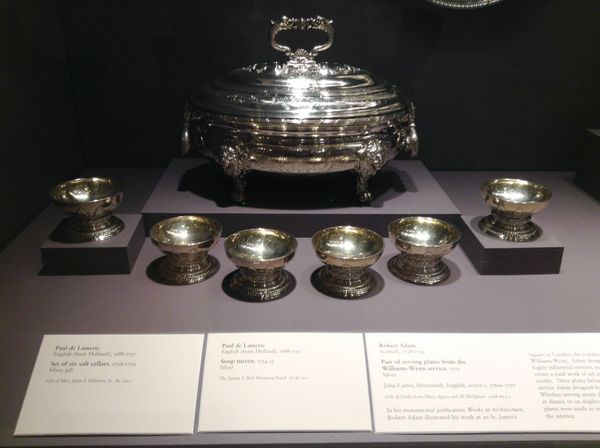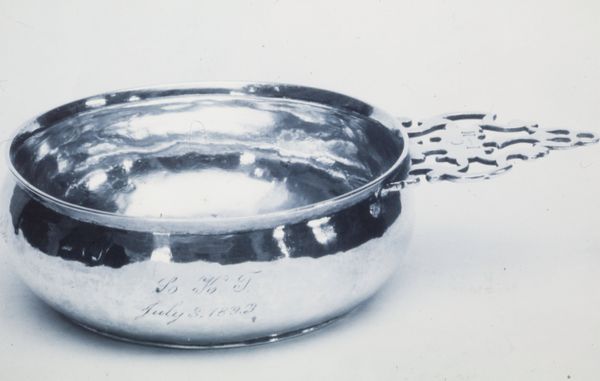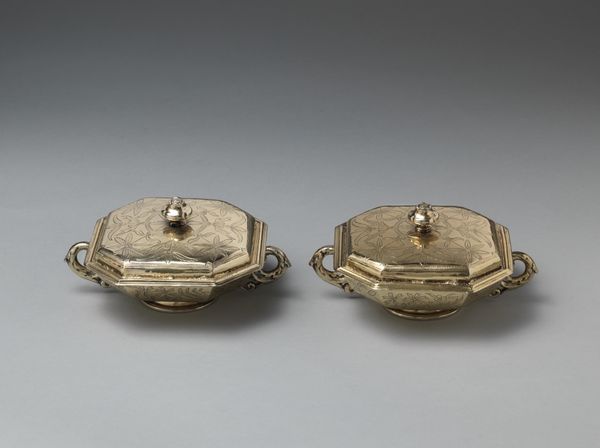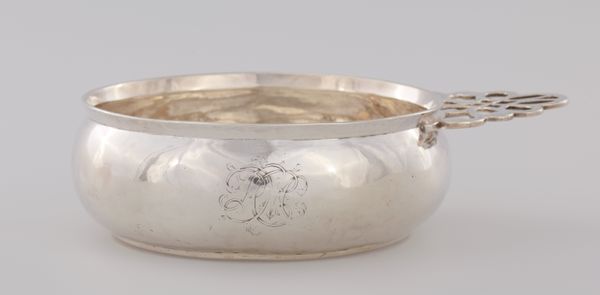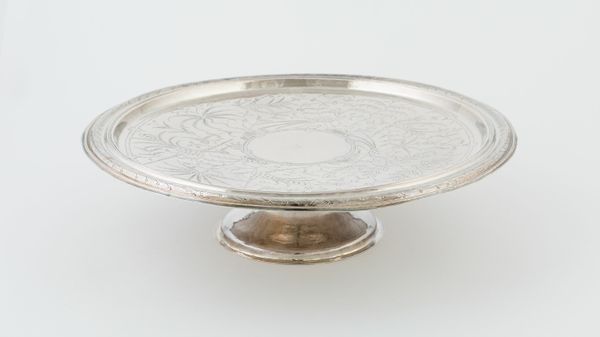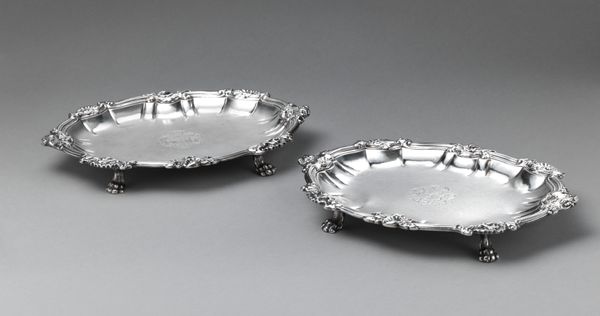
silver, metal
#
silver
#
metal
Dimensions: 2 x 8 3/8 x 5 3/4in. (5.1 x 21.3 x 14.6cm)
Copyright: Public Domain
Curator: Let’s consider this Porringer, crafted by John Burt around 1725 to 1730. It is comprised of metal, or rather, silver, now residing at the Minneapolis Institute of Art. What are your initial observations? Editor: It’s remarkable how the silversmith could transform metal into an object with an inviting shape and those ornate handles, which look delicate but also provide function. But seeing two of these side by side really emphasizes their form. How might we approach an interpretation of these pieces from an artistic perspective? Curator: Note how the primary forms – the bowls – are defined by a simple, almost perfect circle, while the handles disrupt this symmetry with their intricate, projecting designs. Think about the formal tension created. Do you observe how light plays on the hammered surfaces, subtly animating the metal? This contrast between the regular curves and the irregular faceting, along with the balance of reflective light and shadowed space, provides an intricate, satisfying aesthetic. Consider the shapes created, too. Editor: So it's about looking at how shape, light, and the deliberate alteration of the surface give the bowl its visual appeal. So, is the value residing in those compositional elements of curve, light and shape alone? Curator: Precisely. We see the artist's deliberate choices manifested in the finished object; an almost paradoxical merging of practical utility with visual intrigue and balance. This isn’t only about holding liquid, but about how such a thing looks. Editor: This approach really shifts my perspective. Curator: Mine as well. Seeing you examine it from a functional angle reminded me to see the visual from another viewpoint. Thank you!
Comments
No comments
Be the first to comment and join the conversation on the ultimate creative platform.
